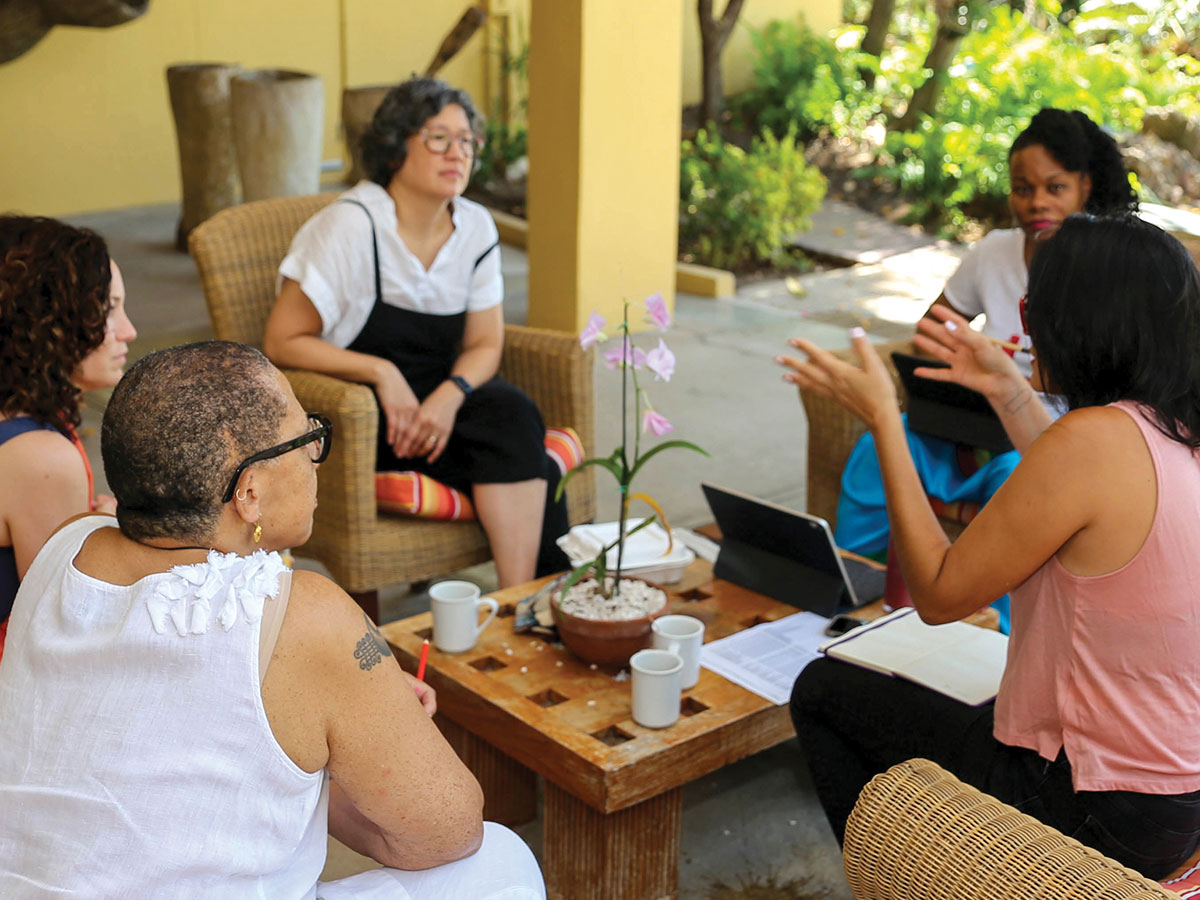
The philanthropic sector has recently made a notable shift toward factoring equity into its grantmaking, considering big questions of historic and ongoing differentials in access to resources based on race and other dimensions of power and privilege. In this context, indirect cost rate policies for project grants may seem like a neutral, technical, and even outmoded concern. But here lies an overlooked and often untapped opportunity to drive equity using demographic data.
No policy is ever really neutral. All involve value judgments (such as whether a nonprofit’s administrative costs are “legitimate” expenses) and all can and should be evaluated in terms of their distributional impact. In the case of funders’ policies regarding coverage of grantee indirect costs, there is a strong case that low indirect cost rate caps are particularly unfair to smaller organizations—a category that tends to include many grantees led by and serving people of color as well as those in rural communities.
The “nonprofit starvation cycle” caused by unrealistic donor expectations of grantees’ administrative and operating costs has been a known problem in the grantmaking world for years, but it hasn’t generally been evaluated through an equity lens. Recently, we and our colleagues at BDO FMA analyzed data from IRS Form 990 filings of nearly 150,000 501(c)(3) organizations and found that the indirect cost rate reported by those organizations has an inverse relationship to their budget size. In other words, smaller organizations tend to have higher indirect cost rates than larger organizations.
The table below lists median indirect cost rates by organizations’ total expense budgets. For purposes of this analysis, indirect cost rate was calculated as an organization’s total management and general expenses plus total fundraising expenses as a percentage of total program expenses. Also note that while these ”reported” indirect cost rates are based on calculations from IRS Form 990 filings, nonprofits often face pressure to under-report indirect costs in such public-facing documents.
| Median Indirect Cost Rate by Budget Size | ||
|---|---|---|
|
Organization budget (total expenses) |
Number of organizations |
Median rate |
| $250K–$1M | 71,583 | 17% |
| $1M–$2M | 23,979 | 19% |
| $2M–$5M | 21,363 | 18% |
| $5M–$10M | 10,888 | 17% |
| $10M–$20M | 7,433 | 16% |
| $20M–$100M | 7,945 | 16% |
| $100M or more | 2,967 | 14% |
| Grand total | <146,158 | 16% |
This isn’t surprising, as “indirect” functions such as human resource administration, accounting, and information technology management benefit from economies of scale and can be done relatively efficiently in larger organizations. This is the very business model of fiscal sponsors and professional employer organizations. But it also means that smaller organizations are—through no fault of their own—penalized by arbitrarily low caps on indirect cost rates that funders set. The data above shows that, for example, a hypothetical funder’s fixed indirect cost rate limit of 15 percent would fully cover the indirect costs of the median nonprofit with a budget size of $100 million while leaving a substantial gap in coverage for an organization with a budget of $1 million.
Work that we have done with grantmakers to analyze their own grantee portfolios has shown the same trend. Across the board, the median reported indirect cost rate of smaller-budget grantees is higher than that of larger ones, and generally the gap is even wider than in the full 990 dataset shown above. Another thing that we know from our work with grantmakers who track demographic data for their grantees is that organizations led by people of color tend to be smaller than white-led organizations and therefore tend to have higher indirect cost rates. As a result, we can rather confidently hypothesize that low, fixed, indirect cost rates on grants disproportionately burden organizations led by people of color.
In addition, many Black-, Indigenous-, and people-of-color-led and serving organizations have historically had limited access to typical sources of general operating support such as high-net-worth donors, special events, and direct mail. This is also generally true for organizations in rural areas. Consequently, these organizations rely even more on indirect cost coverage from project grants to support their overhead and operating expenses. This creates a double whammy for those organizations. They are subjected to higher indirect costs overall because they’re smaller organizations without the advantages of scale, and at the same time, they have less access to the kind of flexible, general funding that helps to defray those costs.
At least one grantmaker we have worked with has used this analysis to inform a revision of its policy to account for these variances. The Annie E. Casey Foundation recently implemented a sliding scale policy, such that grantees with smaller operating budgets are eligible for a higher indirect cost rate on grants than grantees with larger budgets, consistent with the data from their own grantee portfolio as well as the sector as a whole. One stated intention of the policy and the process by which it was arrived at was to center racial equity, which the foundation was able to do by collecting demographic data on its grantee organizations.
This is where our overall research into this question—and others like it—is still somewhat lacking: the ability to analyze organizations by demographic characteristics. We do have this information from some grantmakers we have worked with, so our evidence is better than anecdotal but not yet as systematic as we might like. That’s why it’s so important for individual funders—or better yet, the philanthropic sector as a whole—to collect data on the demographic profiles of grantee leadership and staff as well as of the communities they are serving.
PEAK Grantmaking’s Driving Equity Through Demographic Data Collection is designed to help grantmakers begin this process with their own grantees. Candid also offers an option for any nonprofit to include leadership and staff demographics in its GuideStar Nonprofit Profile. This powerful information will allow us to analyze the impact of a wide range of grantmaking policies and practices, and to shape them in a way that most equitably serves the needs of grantees.
Image: Creating Futures by Rommy Torrico for Amplifier





